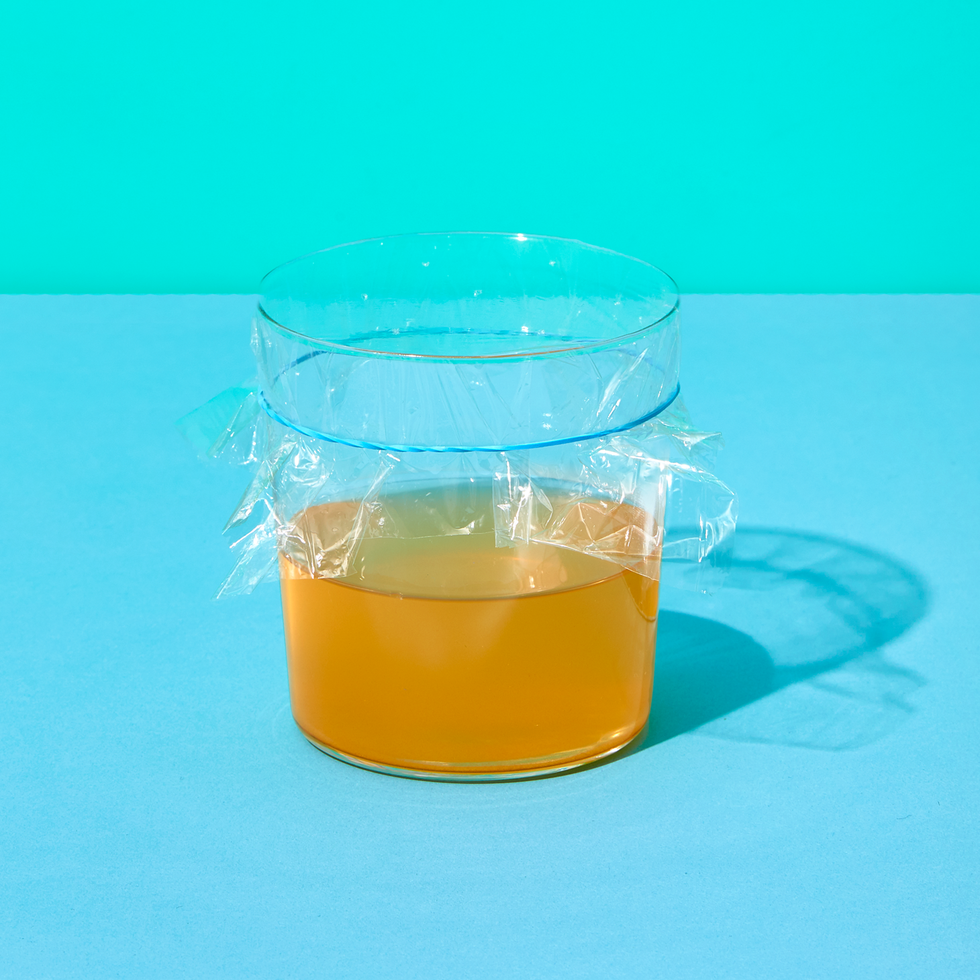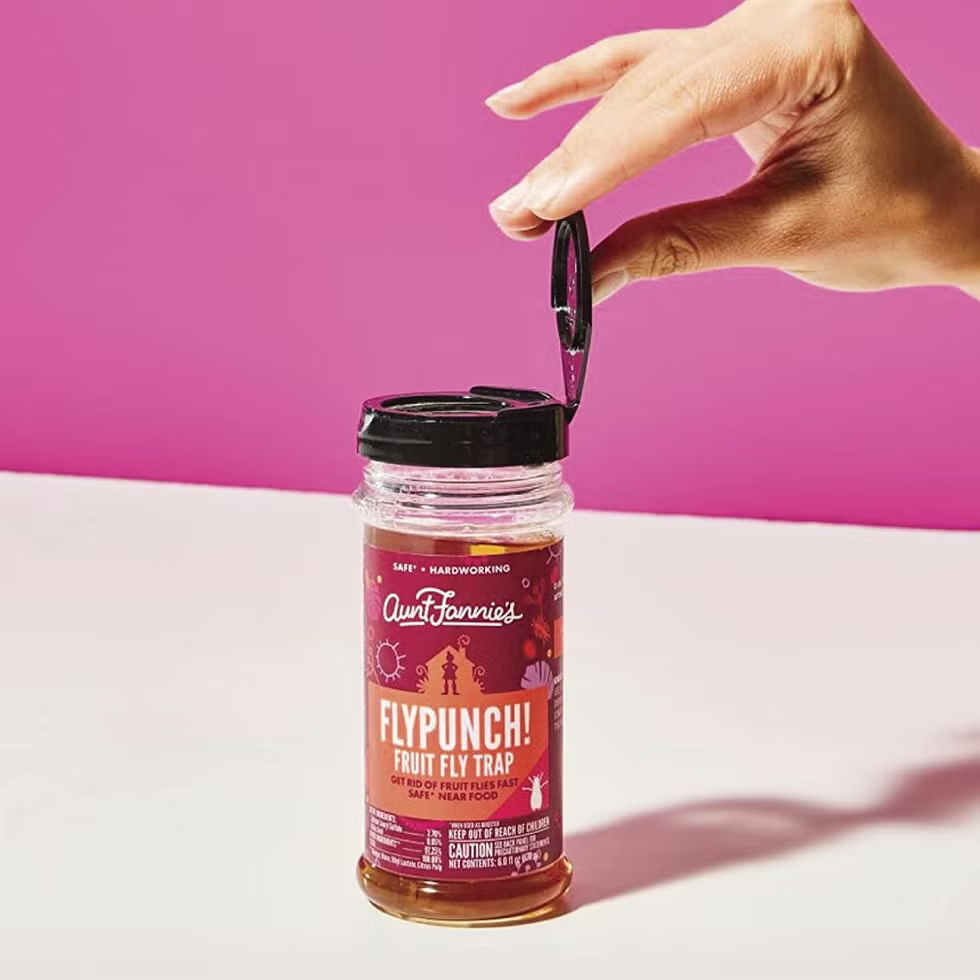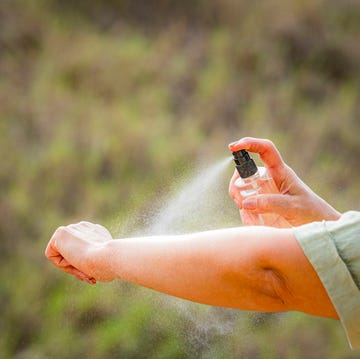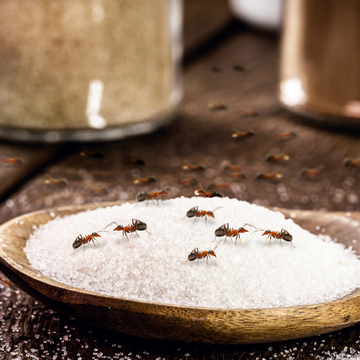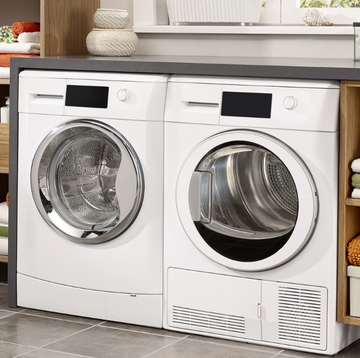At one point or another, you're bound to deal with pesky fruit flies inside the house. While there are plenty of potential remedies online—store-bought solutions and DIY traps—not all of them are the most effective. To find out which ones truly work, we spoke to pest experts about how to kill fruit flies once and for all.
These pesky little creatures love garbage and produce, making them most attracted to the kitchen. If you spot a few, you might want to act quickly—females can lay hundreds of eggs on overripe fruit, which could eventually lead to maggots.
From DIY traps involving apple cider vinegar and rubbing alcohol to products tested by the Good Housekeeping Institute, we have expert-approved solutions waiting for you (including a GH Seal-holder!). Plus, we've included step-by-step instructions for the homemade traps.
What are fruit flies?
Fruit flies (Drosophila melanogaster) tend to fly around the kitchen as they're most attracted to garbage, fruits, and vegetables. These tiny brown insects are often confused with a few other pesky creatures—think drain flies, house flies, and gnats. Before you tackle the problem, make sure you're identifying them correctly.
How to prevent fruit fly infestations
According to the pros at Orkin, there are a few specific things that attract fruit flies:
- Fruit and produce that's ripe, rotting, or decayed.
- Fermented goods like beer, liquor, and wine.
- Trash cans and garbage disposals with lingering food.
If you're home is not already infested and you're hoping to prevent fruit flies from entering, follow these guidelines:
- Regularly toss any overripe produce.
- When possible, store fruits and veggies in the fridge.
- Wash produce as soon as you get home to remove any existing eggs or larvae.
- Take out the garbage regularly.
- Clean up spills ASAP, especially fruit juice or alcohol.
How to trap and kill fruit flies
Here are the best ways to kill fruit flies, according to experts.
Want even more from our cleaning experts? Sign up for Good Housekeeping's FREE pop-up spring cleaning newsletter!
1. STEM Flying Insects Light Trap
This GH Seal-holder impressed our experts at the Home Improvement and Beauty Labs with its ability to catch a variety of flying insects. The light trap is completely free of chemical insecticides, making it people- and pet-friendly. All you have to do is plug it into an outlet and swap in a new cartridge when it's full.
2. Apple cider vinegar and plastic wrap trap
For this DIY fruit fly trap, sweet apple cider vinegar (ACV) is more effective than white vinegar. Fruit flies can't resist the scent of vinegar, and they won't be able to exit once they're inside. For an even better chance at success, make several of these traps and place them around your kitchen. Here's how to do it yourself:
- Pour a little ACV into a glass.
- Cover the opening with plastic wrap and secure it with a rubber band.
- Poke a few small holes for the fruit flies to enter.
3. Paper cone, vinegar, and old fruit trap
The smell of rotting produce will help entice the fruit flies into the mixture, but the cone part of this fruit fly trap makes it difficult for them to get out. Here's how to do it yourself:
- Place a little vinegar and a chunk of very ripe fruit in a jar.
- Roll some paper into a cone and stick it into the jar, placing the narrow opening down. You can recycle or compost the homemade funnel afterward.
A similar idea: Cut open the top of a plastic bottle and use the bottle's top as your narrow opening (cone) for the flies to go through. Place vinegar and ripe fruit at the bottom to trap them.
4. Vinegar and dish soap trap
If you find fruit flies immune to your plastic wrap or paper cone traps, try adding three drops of dish soap to a bowl of vinegar and leave it uncovered. The dish soap cuts the surface tension of the vinegar so the flies will sink and drown.
5. Aunt Fannie's FlyPunch
The product analysts in the Good Housekeeping Institute were excited to see this product cross their desks, especially Beauty, Health & Sustainability Lab Director Sabina Wizemann, who found that it worked better in her home than other DIY remedies she's tried. The pre-made mixture uses the active ingredients sodium lauryl sulfate (a surfactant used in soaps) and malic acid (found in fruit) and comes in a stand-up jar. All you have to do is open the top and set it on your kitchen counter.
6. Old wine or beer trap
Fruit flies love the smell of wine. Try leaving out an open bottle with a little leftover liquid—the skinny neck will keep the flies trapped. The Old Farmer's Almanac also recommends using stale beer to attract fruit flies to a DIY trap. Add a couple drops of dish soap to either for greater success.
7. Alcohol spray
Fill a spray bottle with rubbing alcohol and spritz any insects you see in your home. Just make sure to avoid spraying the alcohol on fruit, as it may cause it spoil, which will lead to more fruit flies.
Can I use bleach to kill fruit flies?
If you notice fruit flies in your drain, you might be looking for an instant fix—like pouring bleach down the drain. But experts say this isn’t the most effective solution. Doing so might kill some larvae, but it will not kill enough of the eggs or larvae to eliminate the problem. That's because bleach passes down the drain too quickly to do a thorough job.
If you have a garbage disposal, here's how to keep it clean and free of fruit flies:
✔️ Always run cold water before turning on the disposal or grinding food, and for a few seconds after the grinding stops. The water flow will help food move all the way through the pipes after it leaves the disposal.
✔️ Every week or so, with the disposal and faucet both turned off, toss in a bunch of ice cubes, a tablespoon of baking soda, a few thin lemon slices, and a teaspoon of bleach. Turn the disposal on without running water until you hear the grinding stop. Then, with the motor still running, flush the machine with cold water for about a minute.
How do I kill fruit flies outdoors?
If you notice fruit flies buzzing around the homegrown fruits and vegetables in your garden, our Lab experts recommend using Spinosad insecticide to kill them. Fill a garden sprayer with the formula and apply it around the base of your home. You can also spray the liquid directly onto your fruits to kill any flies that may have already landed on them—just make sure to rinse the fruits and veggies thoroughly before eating them. While Spinosad insecticide is safe to use around people and animals, it's best to limit your exposure, as it may cause eye irritation and allergic reactions.
Monique Valeris is the home design director for Good Housekeeping, where she oversees the brand's home decorating coverage across print and digital. Prior to joining GH in 2020, she was the digital editor at Elle Decor. In her current role, she explores everything from design trends and home tours to lifestyle product recommendations, including writing her monthly column, "What's in My Cart."
Laura Millar (she/her) is the assistant lifestyle editor for Good Housekeeping, where she covers home design. Prior to joining Good Housekeeping in 2024, she wrote for NBC's TODAY.com, where she covered everything from entertainment news to pop culture updates.







